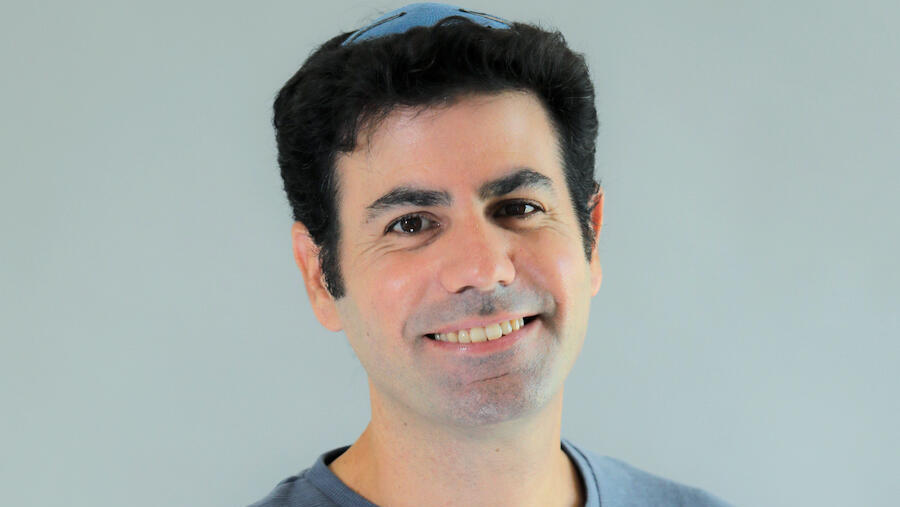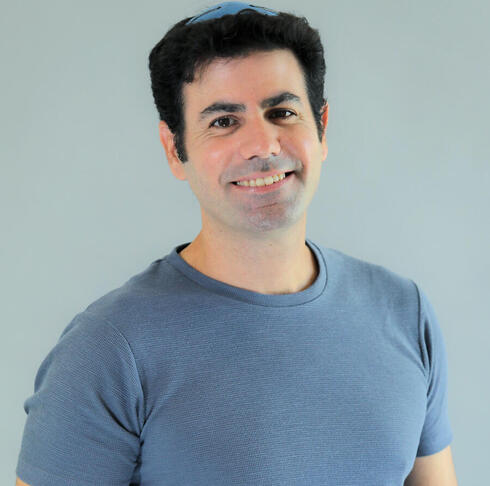
Interview
The LinkedIn Whisperer: Finding your dream job
How do you get from a low point in your career to a situation where suitors are seeking to hire you? Morad Stern, author of the book “Tiebreaker: The Power of Networking, Communities, and Personal Branding", shares how he climbed from being in an employment crisis to where job offers started flowing to him
About a decade ago, when he was 29 years old, Morad Stern, author of the book “Tiebreaker: The Power of Networking, Communities, and Personal Branding”, felt that he was in a professional emergency. He decided to leave his workplace and find a new job but quickly found out that it was a very difficult task and especially doing it alone, without connections - but he had no one to turn to. After finding a job, which was also not the career of his dreams, he decided to devote time beyond his normal working hours to perfect and develop a network of personal and professional contacts - so that the next time he needed, he would have someone to turn to.
"I got on my mobile phone and went through all my contacts and there was no one I felt comfortable contacting whom I had helped in the past. I felt the pain of being alone and when you feel that pain you realize you need a safety net," he says.
He started a professional blog on a topic that excited him and started creating content. "I started playing around and creating. I wrote a blog in the field of UI and then an offer came to be a volunteer public relations person for an organization of usability experts (UI). I went for it, and suddenly when I took on something new that I didn't know, that was beyond my usual abilities - it opened new worlds for me. As a result of my role as a public relations person, I came into contact with journalists. This led to me building together with the technology editor at Ynet at the time, Niv Lilien, a weekly network review section, in which we examined how easy websites were to use. I learned so much from it and became a focal point. People contacted me because they wanted exposure in the section," he says.
The closing of the circle from that 'emergency situation' in his career came for him with the publication of the book he wrote. From that low point a decade ago he was able to get 20% of his book funded within 24 hours thanks to the communities and connections he built along the way. "I published the book with crowdfunding and reached a point where I once again needed help - but this time there were many people behind me. I saw that I could really stand behind what I wrote."
Stern writes about the power of communities, networks of connections and personal branding as a tool for professional advancement, but these tools cannot be built or developed during a professional emergency - during a layoff or when you want to leave a job. "There is a book I recommend on the subject of networking whose name in English, loosely translated is that you should 'dig the well before you're thirsty'. You have to prepare because there are always ups and downs and it has to be from a calm place. When you are in an emergency and you have to find a job to support a family it is not the time to build a community because you are in a very consumed place. In building a community you have to give a lot and when the moment comes when you have to come and ask for something, if you haven't contributed, you haven't done anything - it's not the right time."
Today it is already clear that personal branding or building communities and of course networking professional connections can make a difference and open up employment opportunities, but to what extent can personal branding or community building done with the aim of advancing one's career really work? You often see such personal branding efforts on social media that simply look inauthentic or too 'effortful'. Stern recommends creating communities and it is a tool that has become more and more popular in recent years both among individuals and organizations, but in many cases it seems that the community was created for the purposes of personal or business promotion, which causes people to treat it with suspicion.
"I think that if you put personal branding as a goal in itself, you are already missing the target," says Stern. “The more correct starting point for such a process is the thought that you want to do something significant in life, to reach places that have influence and to get there you need to acquire a lot of knowledge and skills so that people can really testify that you have this knowledge and these skills. It's a long-term race. When people start it only with the goal of personal branding, they can fall very quickly because it's very difficult to measure when you become an 'opinion leader'. When you come from the right place, when you want to be a part of something, to have a real impact, then it requires a lot of internal self-work. In the end, the actions you take will manifest in a more correct personal branding and you can even convert them into money - but that's in the long run. If you're just making noise but you don't have the real knowledge and value that you can bring to the industry - it won't work.”
In the era of network influencers, and personal branding experts, if the basis is knowledge it is difficult to know where the line between an influencer and an expert is. Is someone who has 40,000 followers on Twitter and writes on a certain subject an expert on the subject?
"In reality, 40,000 followers do not make you an expert, but knowledge and experience do. On the other hand, you can certainly make a 'noise' with 40,000 followers in the sense that what you write has an impact and it may be significant in the industry. People who define themselves as experts but are not experts. It's really dangerous, but I think the industry knows how to balance these things. The network is not one-way, when you upload something to the network, it is never sent to the world and accepted as the absolute truth. There are many media outlets, so the beauty of the network is that it is an equal discourse and sometimes it balances out. Therefore, the answer to the question if you have 40,000 followers on Twitter, does that make you an expert - it doesn't."
A significant leap in Stern's career came with his first job in high-tech, at HP, and it came following a WhatsApp group he opened on the subject of technology. The group included many journalists, as well as government and development and entrepreneurship experts who saw value in the group. "A little while after I opened the group, I started receiving requests from people who wanted to join and then I started to be the 'gate keeper' quite actively. This caused me to know people and they knew my name. I understood the power of a small but high-quality community and when current Israeli Prime Minister Yair Lapid joined the group I also understood the power that comes with well-known names joining the community. There is a saying that if everyone is at the best party in town, it's probably not the best in town. In order to maintain the quality of the group, I had to maintain the relevance of the people in it," he says. One of the members of this WhatsApp group worked at HP and connected him to the company and that’s what gave him his first foothold in the company. The hiring process there did not start with his application and sending a resume. In fact, there wasn't even a job at the time - but there was a recommendation for him from a company employee.
"Many times people put emphasis on writing their resumes, but wouldn't you like to reach a situation where you don't have to send a resume? When the company contacts you, the process starts from a completely different place," he says.
So the short answer to the question of how you get from LinkedIn posts to your dream job is that you don't. But the longer answer is that writing posts on LinkedIn or any other platform is part of a web of actions that can be done as part of personal branding, making professional connections and participating in communities. "Yes, you get your dream job from posts on LinkedIn if you do additional things."
Related articles:
Assuming you are not in an employment crisis but want to bring your knowledge and expertise to the world and take part in the conversation, these are the first four actions you can take to build connections, communities and personal branding:
1. Mapping. The first step is to understand what you want to do: what is your dream job, in which field do you want to stand out in the long term. "The more niche you are and can form a smaller community around you, the discourse can be more precise and of greater value. For example, if you want to stand out in the information security industry, this is a relatively general topic. If you choose the information security industry in the niche of advanced vehicles, it is already narrower and more focused."
The next step is external mapping - check how entrepreneurs, opinion leaders and those who currently have the ability to create an impact did it - how they received approval from the community. What are the places where you should be, who are the people you want to get the attention of.
2. Know the holidays and dates that are relevant to your community. For example, if you want to be part of the world of smartphones then you need to know the date when Steve Jobs introduced the iPhone. That date, year after year, is considered an important event in this community and industry that you want to be a part of, so you should take your own actions that mark this day and show how connected you are to this action, such as publishing an article. This date has a topical and even newsy aspect for the people in the industry and especially for the niche you are targeting within the industry.
3. Invest time beyond working hours, or in other words - you have to work at it. In order for it to work, you need to allocate time in your calendar where you don't watch Netflix but sit and write. Start making connections on LinkedIn. "This is your time to build yourself up. No one is going to tell you to do that," says Stern.
4. Set up your own CNN. It’s very easy to understand how much power is in the hands of editors at CNN with millions of viewers and it is clear that you will probably not be able to establish a body with so much exposure. But you can set up your own little channel where you are the main editors and you have an audience where people have found value and receive more and more content from you. "In the end, the whole point of creating content is to build your voice out there. If you're a professional and want to get out there, it comes down to content - how do you take what's in your head and get it out so that people know and consume that content."
